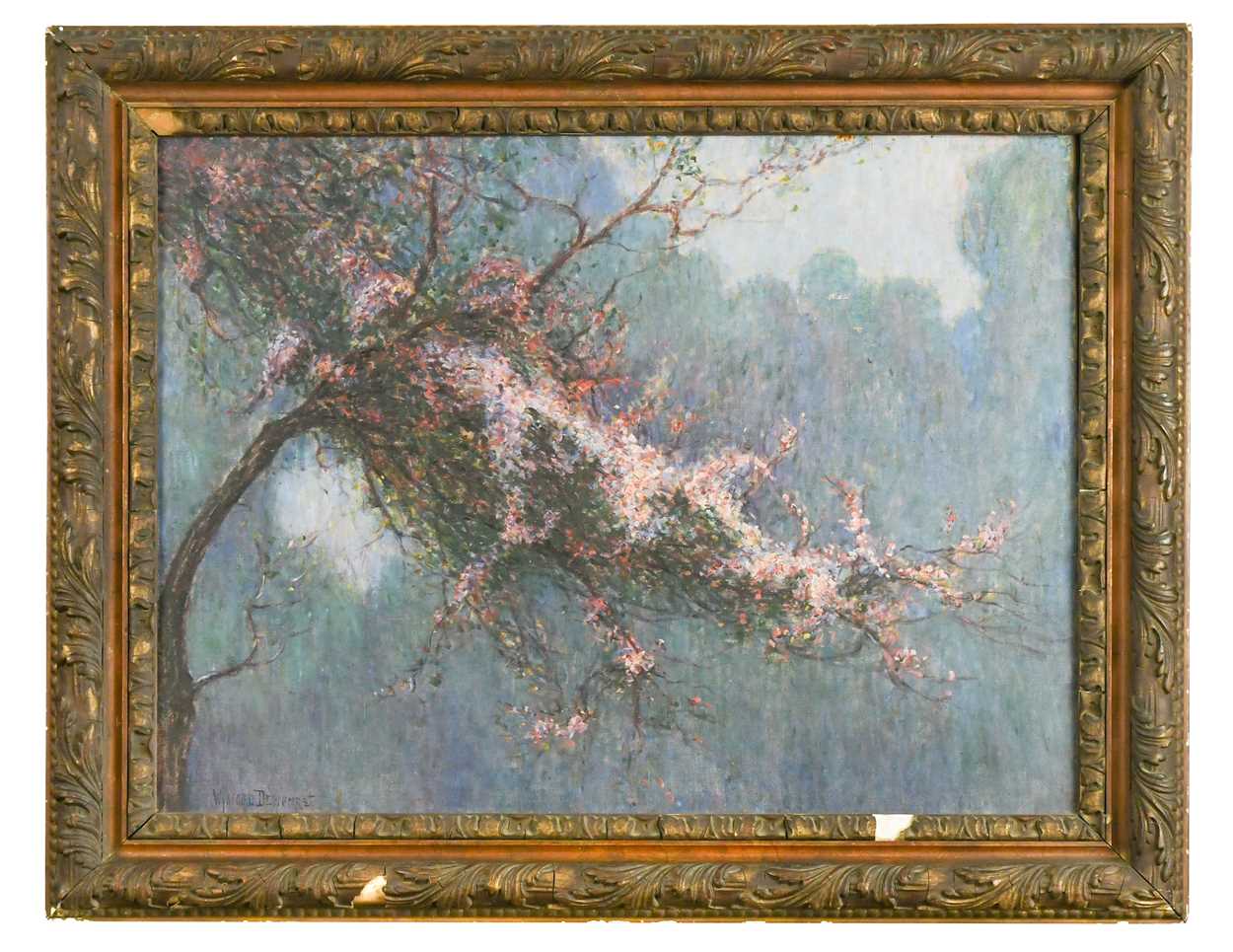Luke Bodalbhai explores the reciprocal relationship between French Impressionism and British art.
April 15th marks 150 years since the first exhibition of Impressionist painting opened its doors in Paris. On that day in 1874, around 30 artists, including Monet, Degas, Renoir and Cezanne, held an independent exhibition of their own art, beyond the traditional confines of the Salon, which heralded the arrival of the ground-breaking art movement.
A recent sale of a painting by Wynford Dewhurst (1864-1941) at Cheffins demonstrates the significant impact that French Impressionists had on British painting but also highlights the influence that earlier British art originally had upon the very development of Impressionism.
The work, a beautiful study of an apple tree branch in blossom, drew very competitive bidding, selling for a hammer price of £3,800 against an £800-1,200 estimate in Cheffins’ most recent Spring Fine Sale.

An apple tree branch in blossom by Wynford Dewhurst (1864-1941)
Born in Manchester as Edward Thomas Smith, the artist changed his name to Wynford Dewhurst whilst studying at the École des Beaux-Arts in Paris. It was in France that he transformed his artistic style from the traditional academic approach of his first teacher, Jean-Léon Gérôme, to the radical Impressionism of Claude Monet. Monet became Dewhurst's most significant mentor and inspiration, as demonstrated by the present painting. Dewhurst dedicated his pioneering account, 'Impressionist Painting: its genesis and development', to Monet; this was the first study of the movement to be published in Britain.
However, it was in this publication that Dewhurst argued that Impressionism was in fact indebted to the painterly innovations of earlier British artists Turner and Constable. Dewhurst wrote that he and fellow British artists were often “sneered at for imitating a foreign style” but believed “French artists simply developed a style which was British in its conception”.
Like waterlilies for Monet, trees in blossom were a favourite subject of Dewhurst who painted numerous variations of the subject. Dewhurst’s writings were also influential in promoting Impressionism in Britain. Although he and his contemporaries may have been sneered at during their own time, today their free and spontaneous work has a popularity which looks set to endure for many years to come.